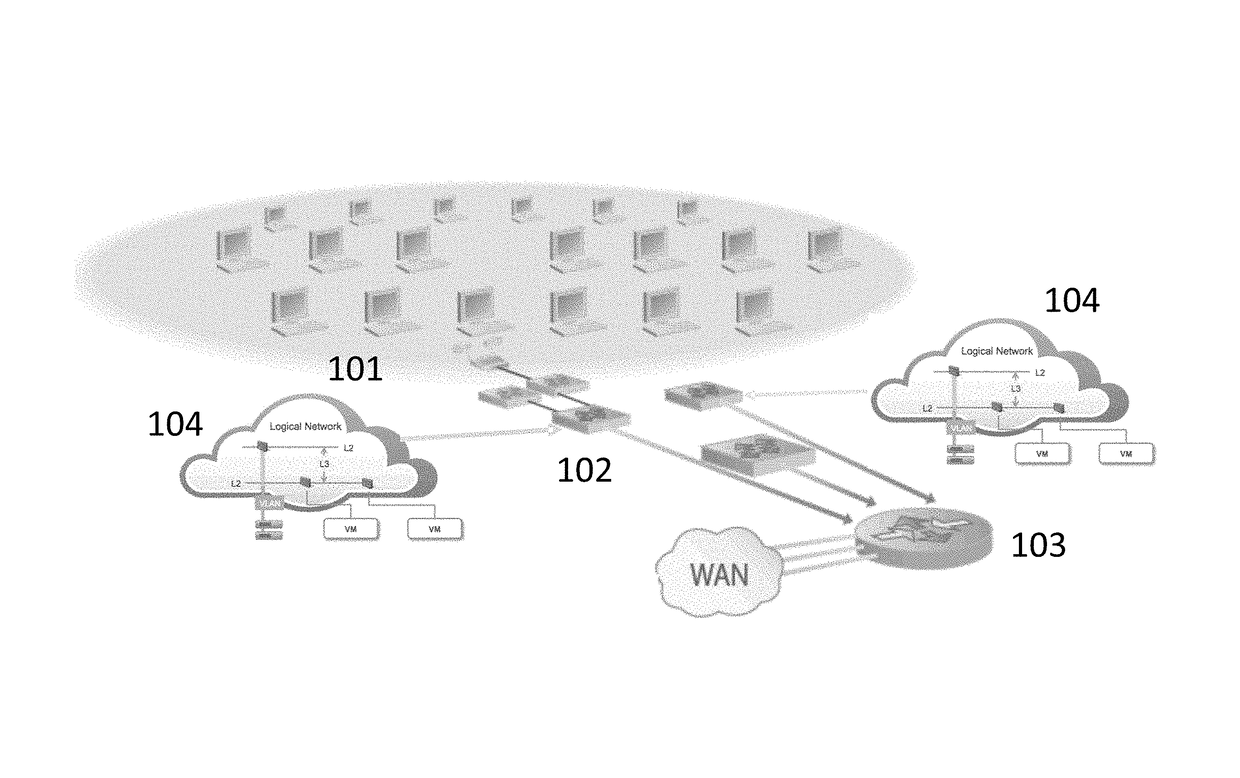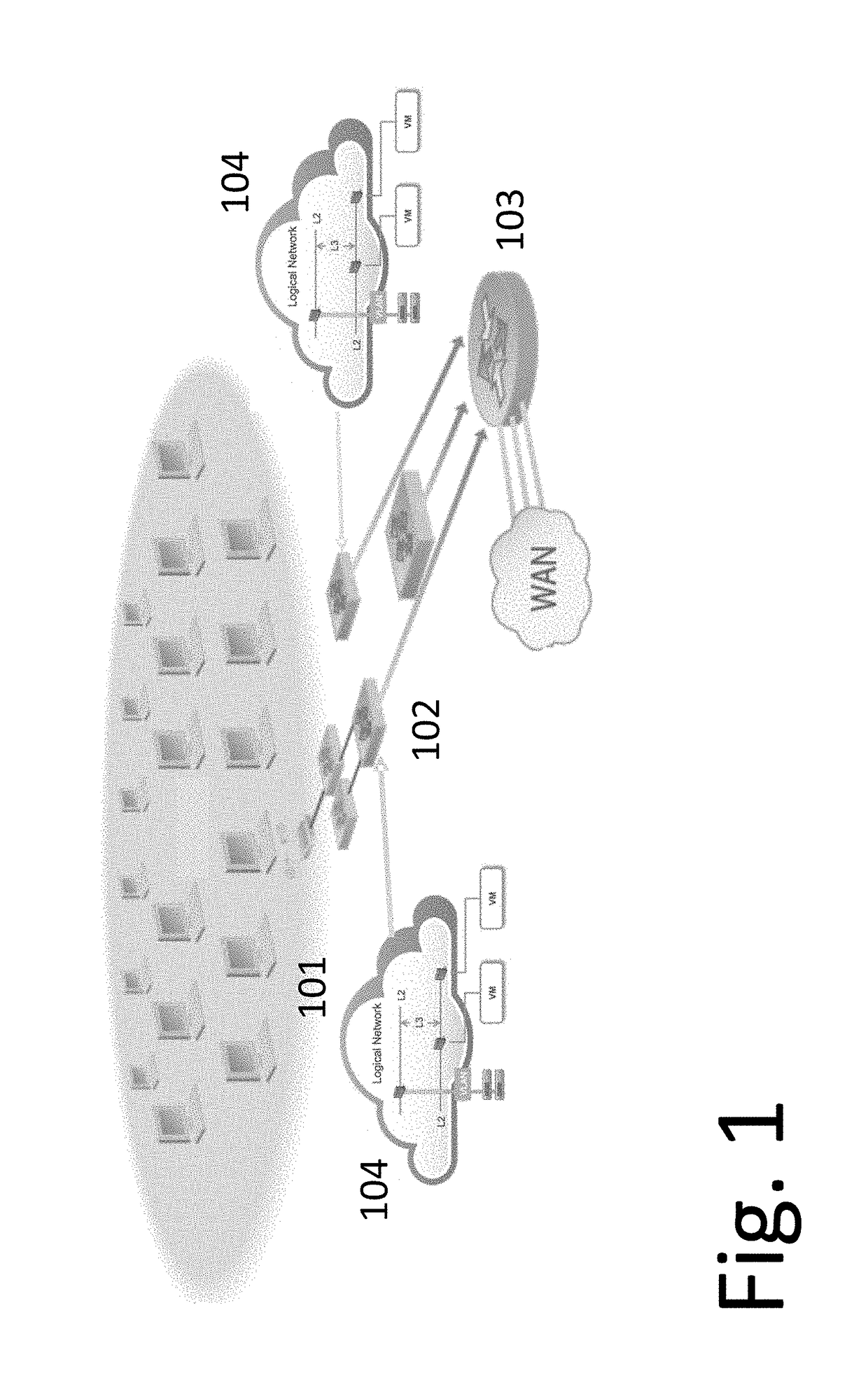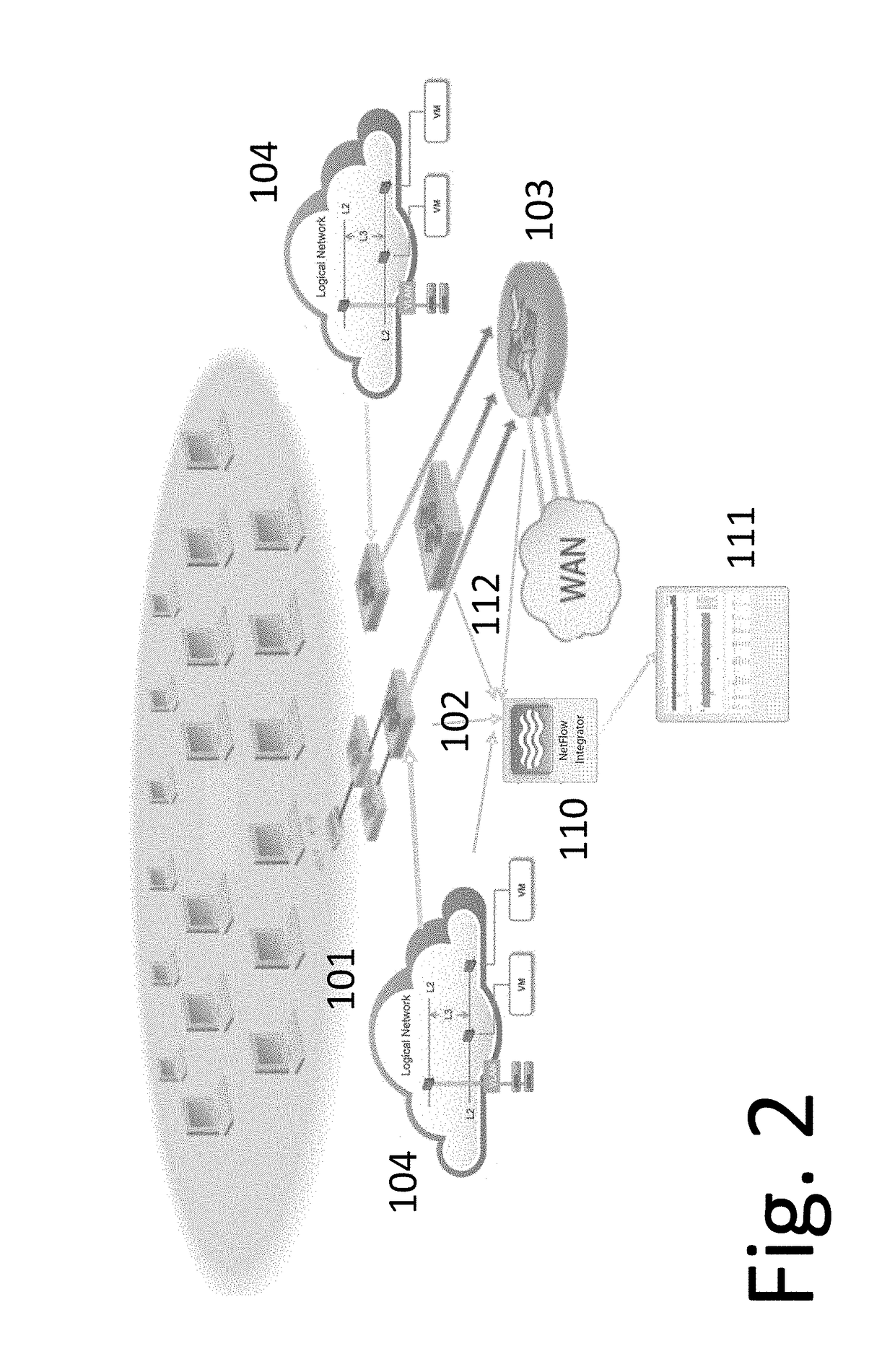Method and system for confident anomaly detection in computer network traffic
a computer network and anomaly detection technology, applied in the field of network monitoring and event management, can solve the problems of overall complexity of integrating additional information streams into existing event analyzers, use of netflow metadata, and inability of siem systems to utilize network monitoring information, etc., and achieve the effect of quick deployment into servi
- Summary
- Abstract
- Description
- Claims
- Application Information
AI Technical Summary
Benefits of technology
Problems solved by technology
Method used
Image
Examples
Embodiment Construction
[0067]In general, the present invention relates to network monitoring and event management. More specifically it relates to processing network metadata obtained as a result of network monitoring activities and subsequent processing of the metadata, which may result in useful information being reported to an operator and / or event management system in a timely manner.
[0068]The present invention will now be described in detail with reference to several embodiments thereof as illustrated in the accompanying drawings. In the following description, numerous specific details are set forth in order to provide a thorough understanding of embodiments of the present invention. It will be apparent, however, to one skilled in the art, that embodiments may be practiced without some or all of these specific details. In other instances, well known process steps and / or structures have not been described in detail in order to not unnecessarily obscure the present invention. The features and advantage...
PUM
 Login to View More
Login to View More Abstract
Description
Claims
Application Information
 Login to View More
Login to View More - R&D
- Intellectual Property
- Life Sciences
- Materials
- Tech Scout
- Unparalleled Data Quality
- Higher Quality Content
- 60% Fewer Hallucinations
Browse by: Latest US Patents, China's latest patents, Technical Efficacy Thesaurus, Application Domain, Technology Topic, Popular Technical Reports.
© 2025 PatSnap. All rights reserved.Legal|Privacy policy|Modern Slavery Act Transparency Statement|Sitemap|About US| Contact US: help@patsnap.com



